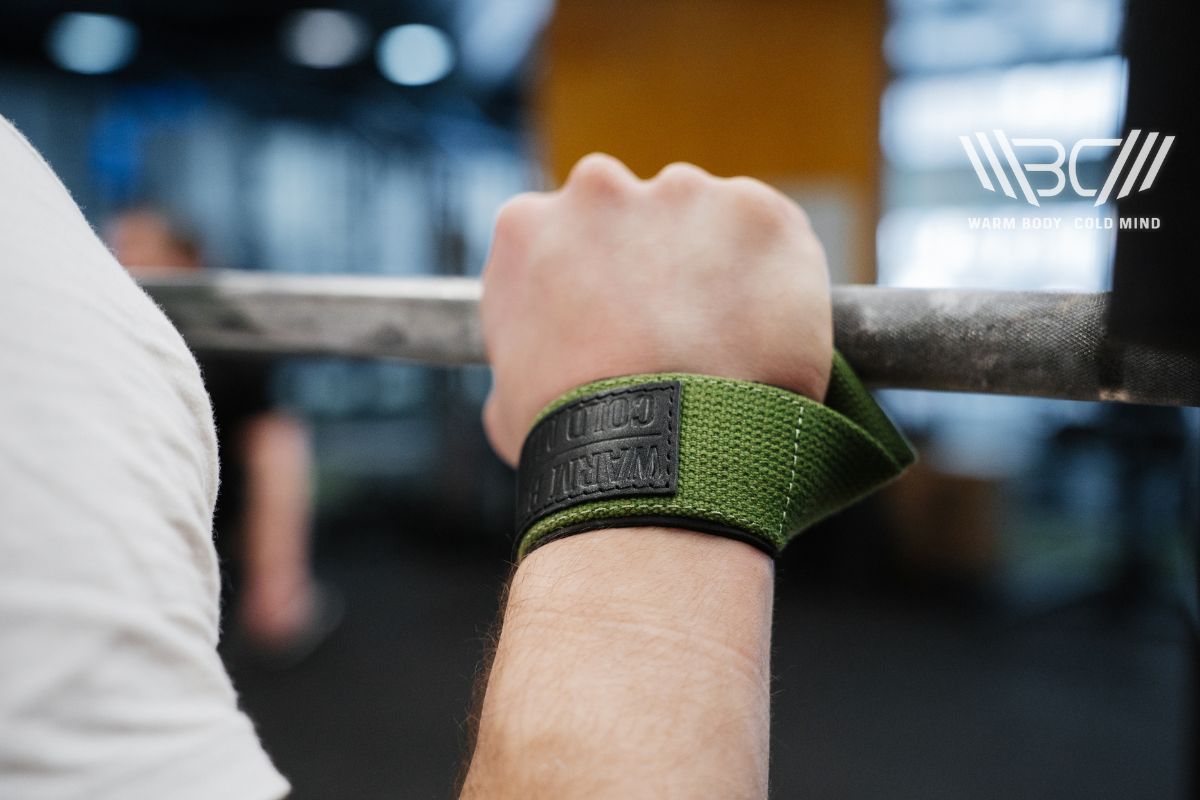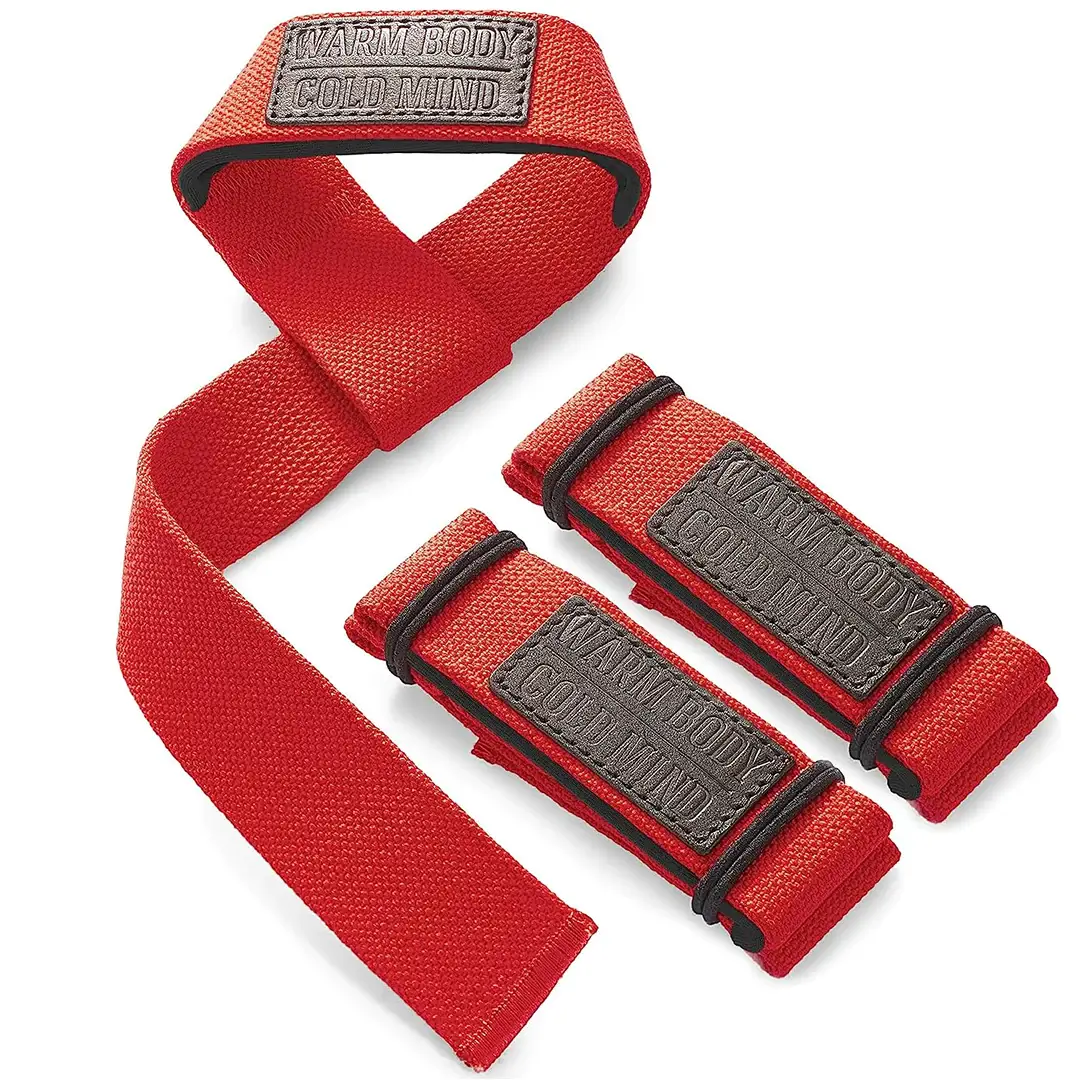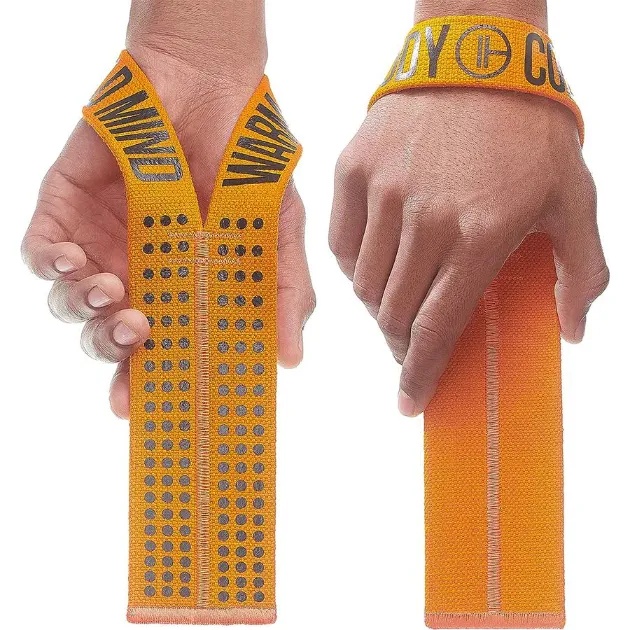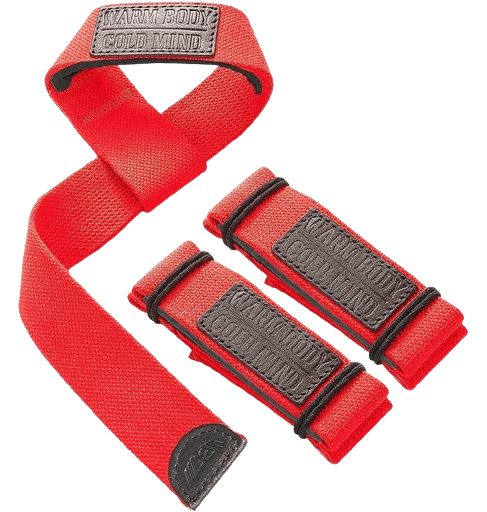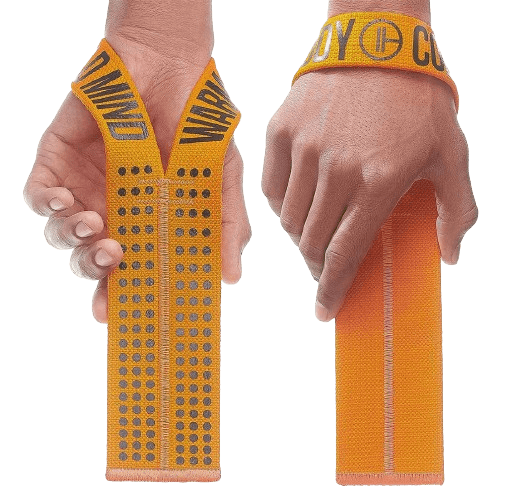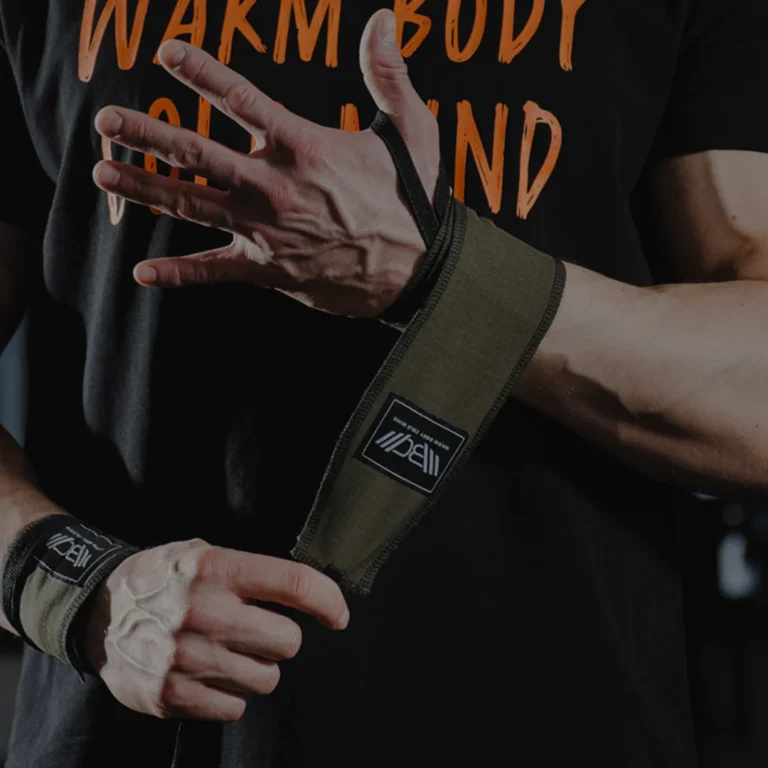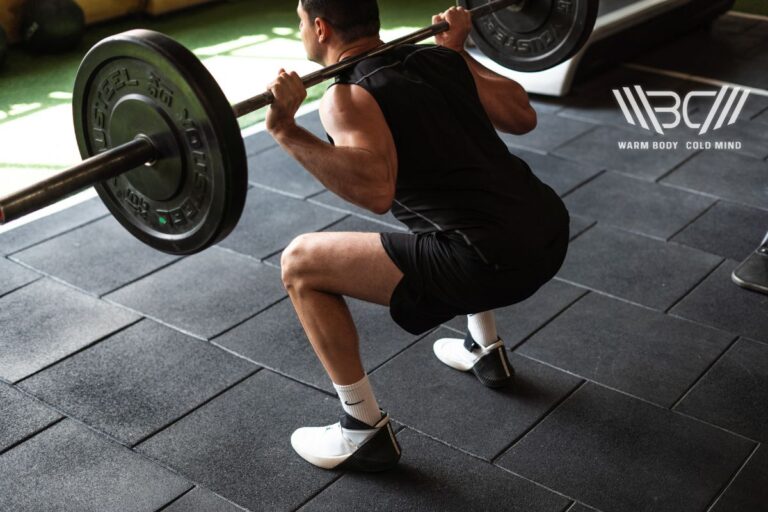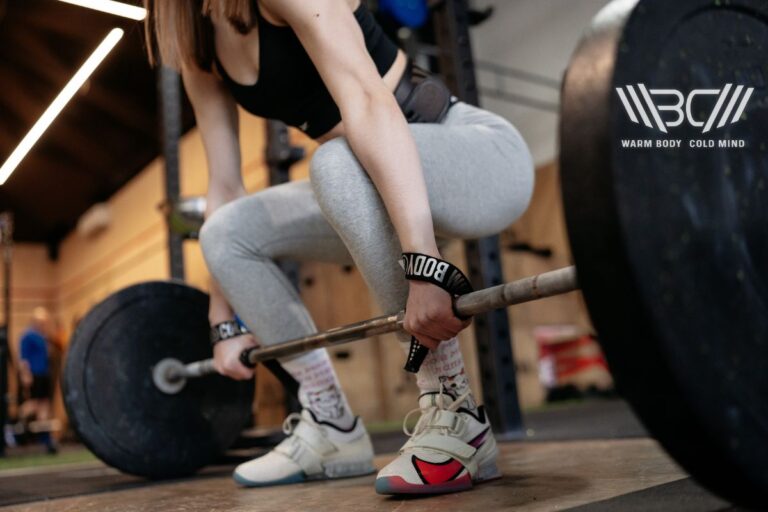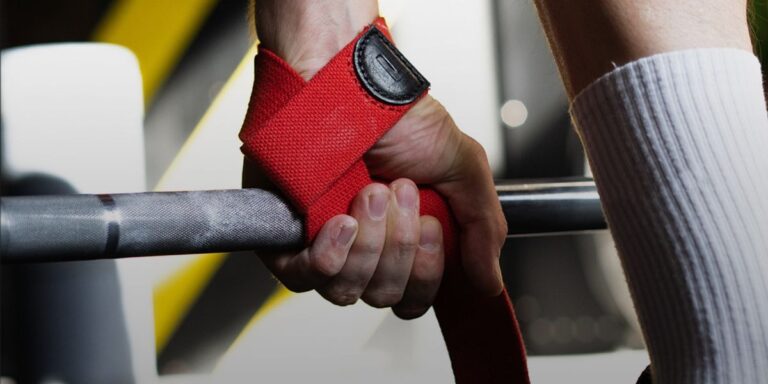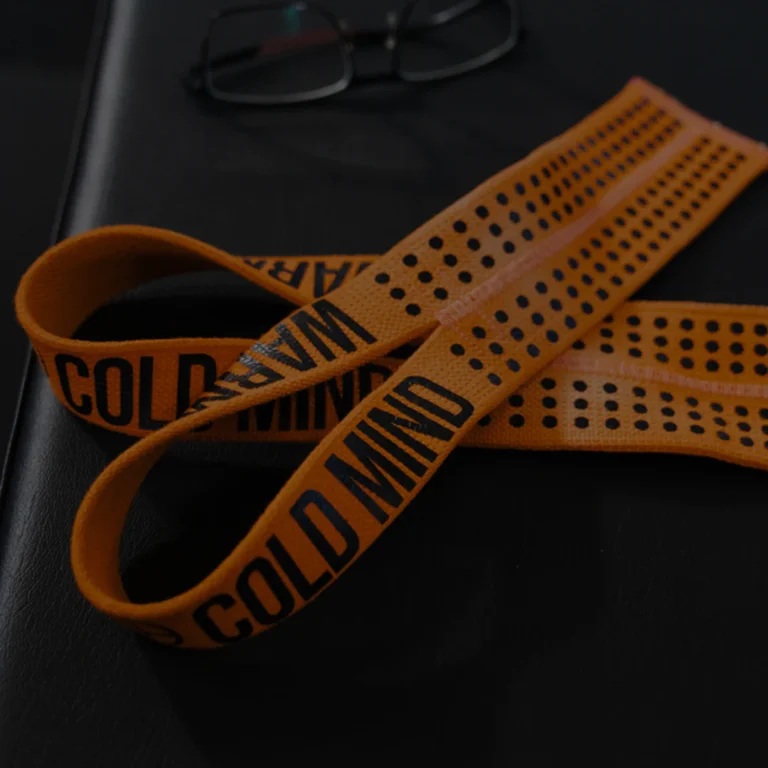Front Squat with Straps: Benefits & How To
It can be hard to maintain a clean grip during traditional squats, which is why a front squat with straps is such a game-changer. They can improve your focus, form, and help you lift heavier weights.
You might be thinking it looks complicated and there may be a whole technique behind it, but the reality is far from intimidating. In fact, it’s anything but intimidating. It’s a really straightforward process once you learn the basics and mastering them shouldn’t take long.
Why do you even need the straps, you ask? You don’t, but they can make a lot of difference when it comes to improving stability and targeting key muscle groups.
Grab some straps, and let’s squat!
What is a front squat with straps? – Front squat with straps involves using lifting straps to secure the barbell across the shoulders, which helps with grip and stability. This can help with form and targeting key muscle groups.
Front Squat – What Is It?
It’s a pretty simple exercise if you’re watching someone else do it. You take a barbell, place it across your shoulders and just squat forward.
If you’re the one doing it, you know it may look simple, but you need to make sure your elbows are lifted high, and your form is correct. And then you need to actually squat with a barbell in front rack positionin your hands, so it’s anything but easy.

However, this exercise is very effective, and it engages multiple muscle groups at the same time. It focuses mostly on your quads, hamstrings, and glutes, since the squatting motion activates major leg muscles. Apart from the leg muscles, it will also engage your core because that’s what keeps you stable.
The upright position of your torso during front squat places greater emphasis on the anterior muscles, which includes the deltoids and upper chest. It can promote a more upright posture and help your spinal health in general. Front squats are great for your lower body, but they also do a good job at improving functional movement and being a robust foundation for more advanced exercises.
5 Benefits of Using Lifting Straps for Front Squats
Using front squat lifting straps can do wonders for your front squats game and improve not just your performance, but your entire training experience.
need to mention that the main purpose of this style squatting is for UPPER BODY MOBILITY development
✅ Better Grip
When you include lifting straps into your routine, there’s less chance of the barbell slipping from your hands, which also means there’s less risk of injury. This added stability means you can focus more on your form and muscle engagement, rather than worrying about your grip possibly failing.

Cotton Lasso Lifting Straps Pro
Enhance your lifting experience with Warm Body Cold Mind lasso lifting straps designed for durability and comfort.
✅ Increased Load Capacity
When your grip isn’t too strained, you can lift heavier weights, and as you know, that will help you push your boundaries and develop your muscles.
✅ More Time Under Tension
Control is everything – your movements need to be deliberate and controlled, whether it’s descent or ascent. When you use lifting straps, it’s easier to maintain continuous control, which extends the time your muscles are under tension. This enhances muscle activation and contributes to better hypertrophy and endurance.
✅ Less Pressure on Wrists
Front squats can put a decent amount of pressure on your wrists, which can be uncomfortable. Wrist straps for front squats redistribute the load to the forearms, which takes some pressure off of your wrists and makes the exercise more comfortable.
✅ Improved Focus on Target Muscles
If you’re not distracted by thinking about gripping the bar, you can focus on contracting the target muscles. Redirecting your focus will enhance the mind-muscle connection and make your workout more effective.
4 Downsides of Front Squats with Lifting Straps
Lifting straps, also known as front squat attachment, can be a fantastic source of support and you see a lot of weightlifters use them with their squats. However, it’s important to be aware of drawbacks.
❌ Risk of Overloading
Don’t go too far with increasing the amount of weight you’re lifting. The confidence you get from the straps might fool you into thinking you can lift a whole lot more than you actually can, and that can compromise your form and lead to injuries. Lifting straps can help you lift heavier weights, but don’t be unrealistic with your expectations.
❌ Dependency
As long as you feel comfortable doing squats without the straps, you’re fine. But when you start to feel like you can’t perform the exercise without them, you’re in a pickle because you’ve become too dependent on them. To prevent this, refrain from using lifting straps each time you squat.
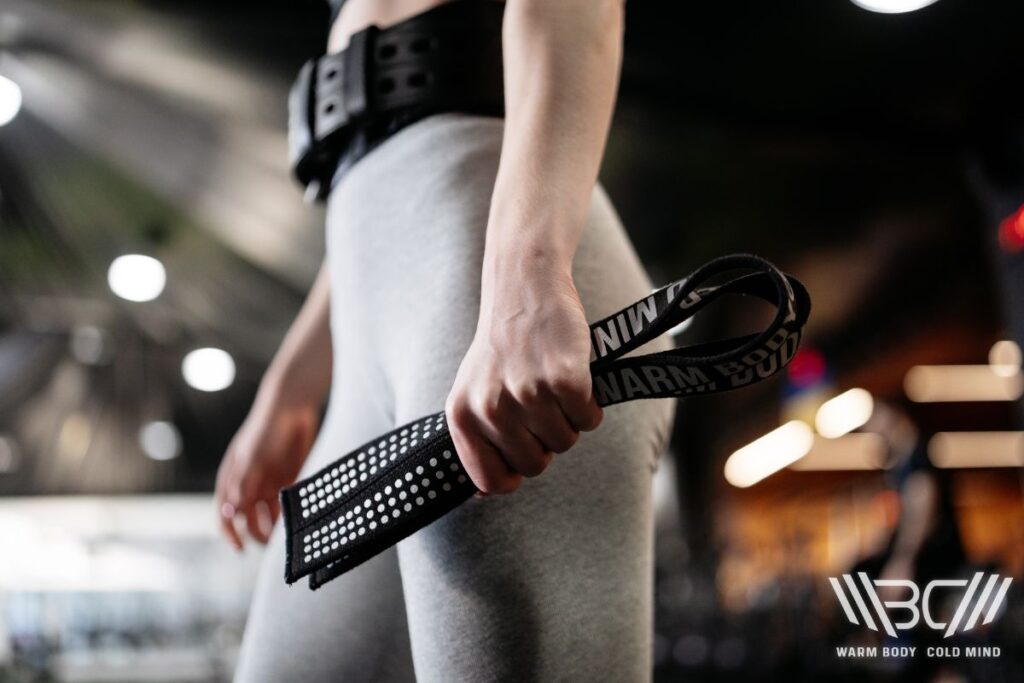
❌ Potential Imbalance
Lifting straps have a bit of a learning curve to them, which means you need to know how to adjust them correctly for them to be effective. If you’re a beginner and try using the straps before you know what you’re doing, the can distribute the weight unevenly and potentially cause muscle imbalances, which can lead to injuries.
How to Front Squat with Straps?
Lifting straps take some time? getting used to, and you need to know how to use them properly. Front squats also need proper form, so even though front squats with straps look really basic and easy to do, there are still a few things you need to be aware of in order to do them correctly.
1. Attaching the Strap
Start by securing the straps around your hands and make sure they fit tight, but still comfortable. Then, loop the straps around the barbell and place them in line with your shoulders. This will give you a secure grip and allow you to maintain control.

Olympic Weightlifting Straps V1
Enhance your weightlifting experience with premium Warm Body Cold Mind Olympic lifting straps.
2. Hand Positioning
When the straps are in place, place your hands on the barbell slightly wider than shoulder-width apart to get a proper front squat grip.
3. Bar Placement
Now that you have the front squat hand position down, lift the barbell off the rack and bring it to the front of your shoulders. Your elbows should be pointing forward and up, like they’re a shelf for the bar to rest on. This position is important because it helps your torso stay straight and upright during the exercise.
4. Feet Placement
Your feet can be either shoulder-width apart or a little wider, with toes pointing slightly out. When you place your feet in this way, you have a stable base for the front squat, and the position allows for proper engagement of the muscles in your lower body.
5. Core Engagement
Don’t forget to engage your core. It will stabilize your spine and make it easier for you to maintain balance and control during the squat.
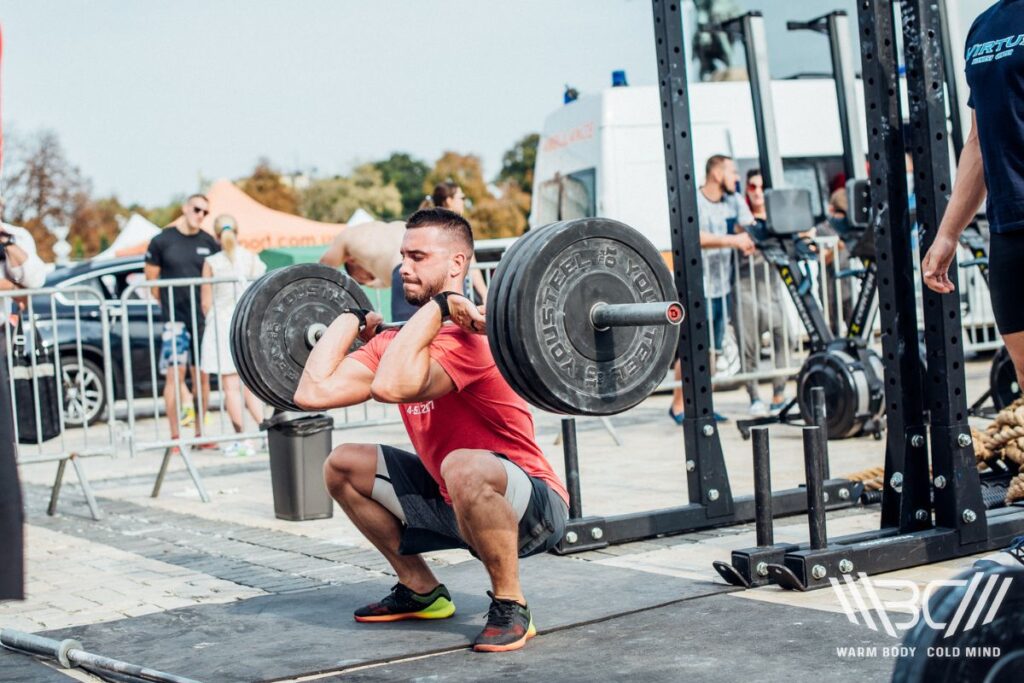
6. Start Squatting
Now you’re ready to actually start exercising. Lower yourself into a squat by pushing your hips back and bending your knees. Keep your torso upright throughout the entire movement and hold the barbell close to your body. Keep lowering until your thighs are parallel to the ground.
7. Drive Through the Heels
As you reach the bottom of the squat, push yourself back up by driving through your heels. This will engageegage your quads, hamstrings, and glutes.
8. Keep the Straps Tense
The straps need to remain tense throughout the entire squat, so the connection between your hands and the barbell can remain secure and continuous.
9. Rack the Barbell
When you’re done with exercising, carefully rack the barbell onto the squat rack and release the straps before stepping away.
5 Main Issues When Front Squatting with Straps
If you want to prevent potential issues, you first need to know what they are. Let’s take a look at the most common issues and what you can do to resolve them.
1. The Straps Being Too Loose or Too Tight
Straps being too loose will compromise grip and stability, and straps being overly tight will restrict your movement and make you uncomfortable. You want a balance – a snug, even wrap around both hands and the barbell. The straps should be tight enough to maintain control but not to the point where they constrict your range of motion.
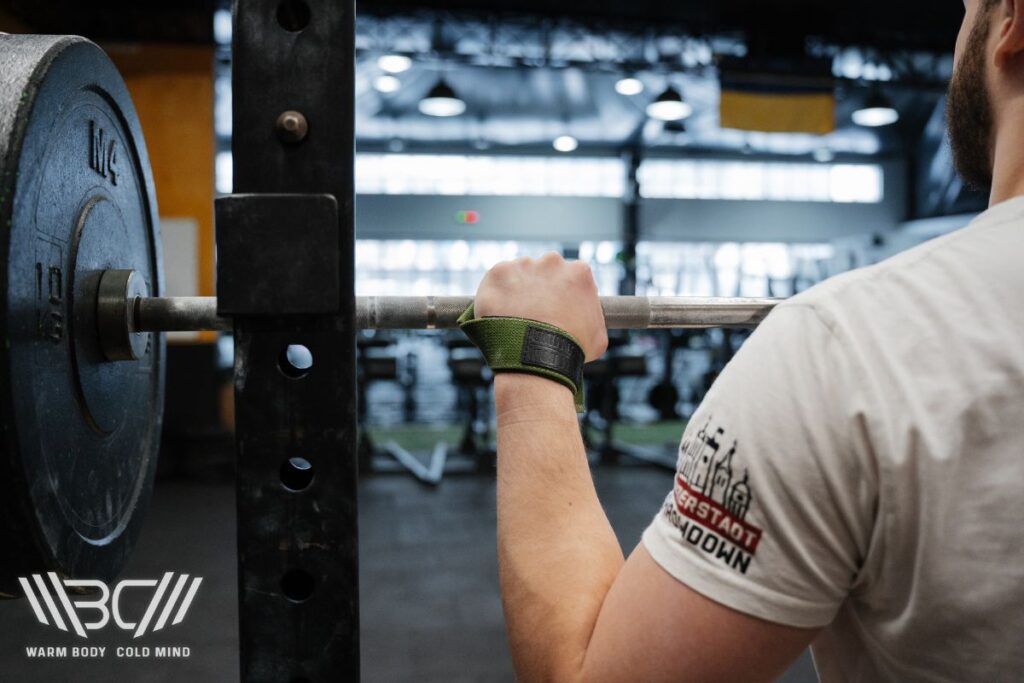
2. Incorrect Hand Placement
When your hands are too close or too far apart, your balance will be off. Always keep your hands slightly wider than shoulder-width and create a stable shelf for the bar on your shoulders.
3. Bar Drifting Forward
If the barbell starts drifting away from your body, you’ll feel it in your lower back because the drifting will put a real strain on it. The barbell should be close to your body at all times during the squat – engage your core and keep your torso upright; that will help prevent drifting.
4. Struggling with Depth
The squat can’t be effective if you don’t hit the proper depth. If you’re struggling with it, work on your hip mobility and flexibility and increase your range of motion little by little as your flexibility improves.
5. Uneven Weight Distribution
If the weight isn’t distributed evenly across the bar, it can lead to instability. Make sure both of your hands apply equal amounts of tension to the straps. If you notice any imbalance, take a break to make necessary adjustments.
What Type of Lifting Strap Can You Use for Front Squats?
You would think deciding whether or not you want to use the straps would be the end of it, but you’re wrong. If you decide against using straps – that’s fine. But if you want to include them in your training, you still need to decide what type of straps would work for you.
If you’re a beginner, you might be overwhelmed with the different types, their features, and the number of recommendations you’ll get if you ask a trainer or a professional. The best thing to do is to get familiar with all the types you can use for front squats, and then see which you might like the best.
1. Figure-8
These have a shape that resembles the number 8, and they loop around your wrist, and then the bar. They are known for being durable and practical, and since you can use them to effectively “lock” your hands to the bar, they’re a good choice for front squats.

2. Lasso
Lasso straps have a loop at one end and a long tail on the other. The tail threads through the loop and forms something that looks like a noose. You can adjust the tightness around the wrist and the barbell, and these straps are another good option for front squats.
Because they’re adjustable, you can secure the barbell comfortably in a clean grip position. Those of you that struggle with wrist flexibility or grip strength will find them particularly useful.
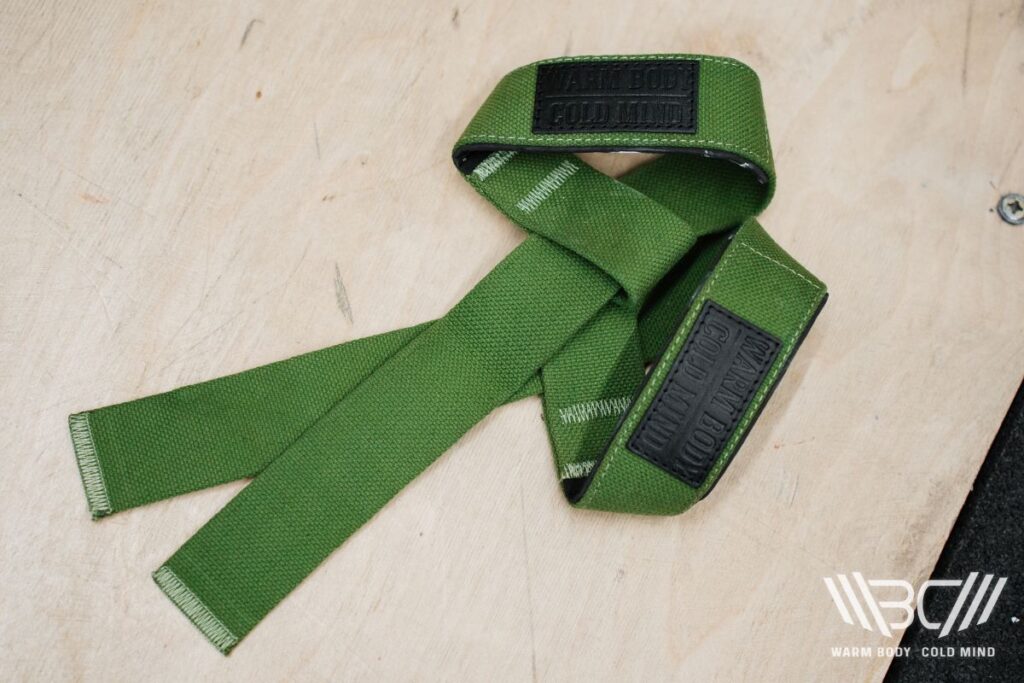
3. Closed-Loop
Essentially, these are a single loop of material. They’re super simple and once your hand is inserted through the loop, the strap forms a circle around your wrist. You grip the bar along with the strap. These straps are not as adjustable as lasso straps, but they still give a secure grip.
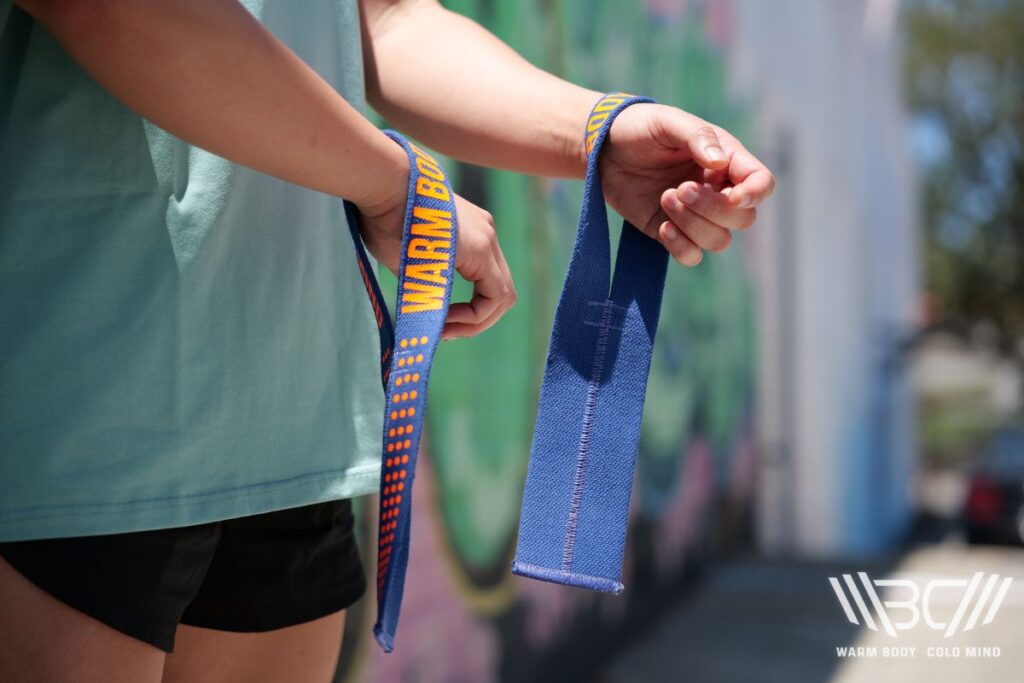
Best Lifting Straps for Front Squats – Our Recommendation
1. WBCM Cotton Lasso Lifting Straps Pro
Although you really shouldn’t skip on learning about all the different kinds of lifting straps, you’re more than welcome to save yourself some time and go with one of our recommendations.

Our cotton lasso straps are made of cotton, neoprene, and authentic leather. They’re heavy-duty while also being comfortable and can take up to 770 pounds. They are 22 inches long, 1.6 inches wide, and 0.16 inches thick and come in 7 different colors. These straps do a terrific job at providing a secure connection to the bar and protecting your wrists against strain.
Pros
- Reasonably priced
- Neat stitching
- Soft on the inside
- High weight capacity
Cons
- They need to be broken in before being fully comfortable
2. WBCM Olympic Weightlifting Straps V1
Our Olympic lifting straps are another good way to go. These are 13 inches long, 2.52 inches wide, and only 0.08 inches thick. They’re made of cotton and they’re the epitome of durability.

They help with wrist strength and allow you to do more reps and lift heavier weights. Apart from front squats, you can use them for powerlifting, bodybuilding, functional fitness, and all other weightlifting exercises.
Pros
- Extremely durable
- Endorsed by world-class athletes and champions
- 12 colors available
Cons
- Might be too wide for beginners
FAQ
Can You Use Lifting Straps for Front Squats?
Yes, you can use lifting straps for front squats, and they can be a great help with improving the strength of your grip. Those who struggle with grip strength or want to lift heavier weights will find the straps extra useful.
Why Don’t People Do Front Squats?
It can be difficult to keep the torso upright because that needs a certain level of core strength and flexibility, so some people choose not to do front squats. Another reason could be the front-rack position, which some find uncomfortable. There’s also a learning curve when it comes to front squats, so that can discourage beginners.
Conclusion
Strapped in and secure, we’ve come all the way to the end and now there’s not a thing you don’t know about how to front squat with straps. The straps you use depend on your preference, but if you’re a beginner, give a few different types a try to see which of them you like best.
If you like shortcuts and don’t feel like doing research on your own, try our WBCM Cotton Lasso Lifting Straps Pro or WBCM Olympic Weightlifting Straps V1. Or you can try both because you never know.
Always double-check the tightness, keep your core engaged, torso upright, and you’ll be on your way to breaking PRs!
Do you use lifting straps when doing front squats? We’re excited to hear anything you have to say on this subject! What kind of straps do you use! What made you decide to use straps during squats, and if you don’t use them, why is that?
Squatting out!
References:
- David Bautista, Dustin Durke, Joshua A. Cotter, Kurt A. Escobar, Evan E. Schick “A Comparison of Muscle Activation Among the Front Squat, Overhead Squat, Back Extension and Plank,” International Journal of Exercise Science 13, no. 1 (2020): 714-722.
- Hugo C Martins-Costa, Lucas T. Lacerda, Rodrigo C. R. Diniz, Fernando V. Lima, André G. P. Andrade, Gustavo H. Peixoto, Mateus C. Gomes, Marcel B. Lanza, Michael G. Bemben, Mauro H. Chagas “Equalization of Training Protocols by Time Under Tension Determines the Magnitude of Changes in Strength and Muscular Hypertrophy,” Journal of Strength and Conditioning Research 36, no. 7 (2022): 1770-1780.
- Ivan Jukic, Amador García-Ramos, Jiří Baláš, Jan Malecek, Dan Omcirk, James J Tufano “Ergogenic Effects of Lifting Straps on Movement Velocity, Grip Strength, Perceived Exertion and Grip Security During the Deadlift Exercise,” Physiology & Behavior 229 (2021): 113283.
- Kate Neudecker “Learn How to Do Front Squats to Fire up Your Quads and Light up Your Core,” Men’s Health, https://www.menshealth.com/uk/how-tos/a735538/front-squat/ (accessed January 29th 2024).
- Tengku-Fadilah Kamalden, Qais Gasibat, Shamsulariffin Samsudin, Jacklyn Joseph “Occurrence of Muscle Imbalance and Risk of Injuries in Athletes using Overhead Movements: A Systematic Review,” Sport Mont Journal 19, no. 3 (July 2021): 3-10.
Author: Sergii Putsov
PhD in Sport Science, Olympic weightlifting, Strength & Conditioning coach and fitness expert
Sergii Putsov is a professional weightlifter with over 20 years of experience and multiple national medals. He was a member of the National weightlifting team, competing in the 94 kg weight class. Sergii holds a master’s degree in Olympic & Professional Sport Training and a Ph.D. in Sport Science. After his athletic career, Sergii transitioned into coaching and is now responsible for designing training programs, writing blog articles, providing live commentary for international weightlifting competitions, and hosting sport and fitness seminars worldwide.

